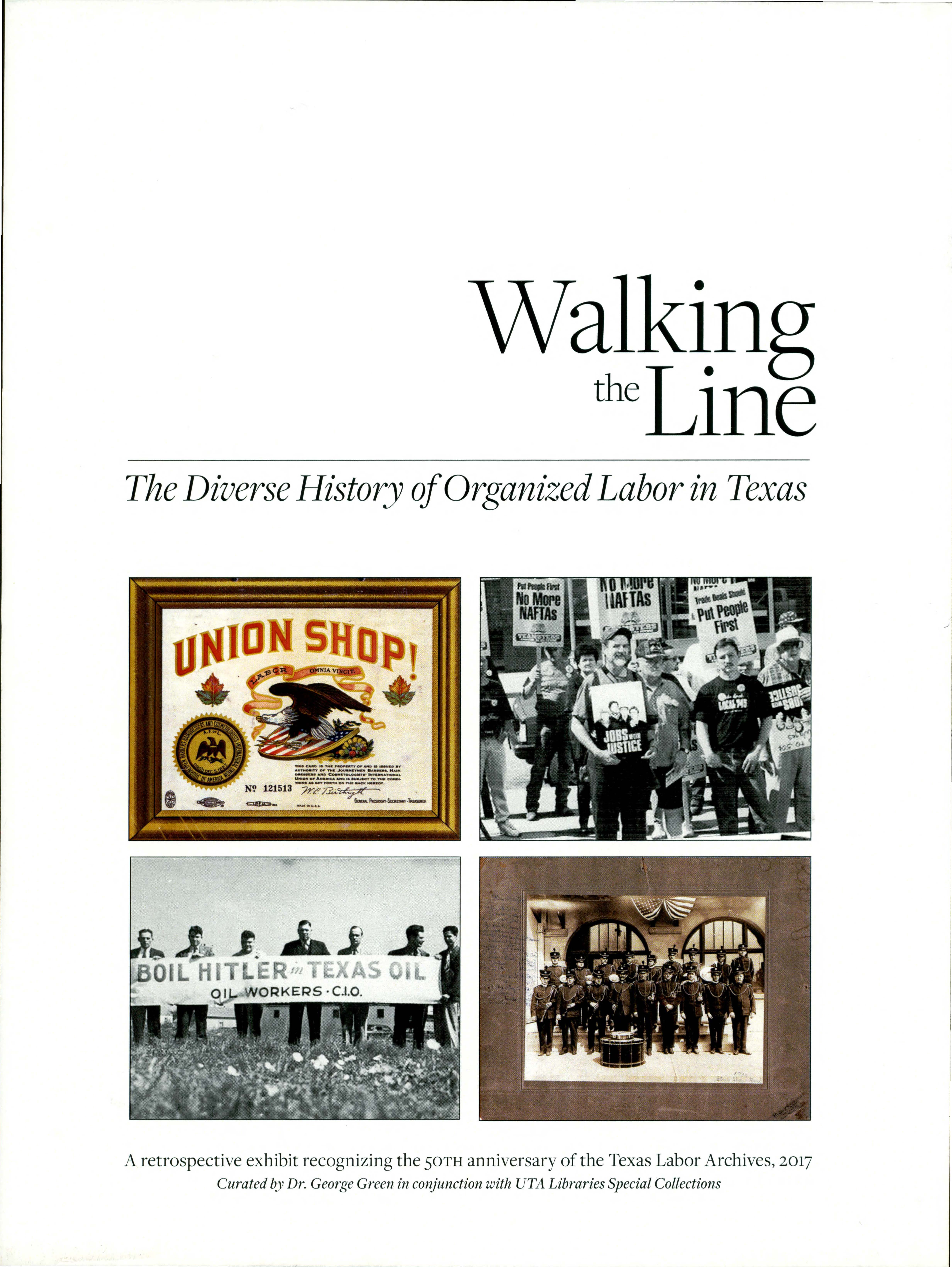
ATTENTION: The works hosted here are being migrated to a new repository that will consolidate resources, improve discoverability, and better show UTA's research impact on the global community. We will update authors as the migration progresses. Please see MavMatrix for more information.
Show simple item record
| dc.contributor.author | Green, George N. | |
| dc.date.accessioned | 2019-08-07T19:35:05Z | |
| dc.date.available | 2019-08-07T19:35:05Z | |
| dc.date.issued | 2017 | |
| dc.identifier.uri | http://hdl.handle.net/10106/28568 | |
| dc.description | A retrospective exhibit recognizing the 50TH anniversary of the Texas Labor Archives, 2017.
Curated by Dr. George Green in conjunction with UTA Libraries Special Collections. | en_US |
| dc.description.abstract | The task of organized labor is to persuade employers to recognize unions and to share more of their wealth. Also-during much of our state and national history beginning in the 183os-labor called for a reduction in hours per day and days per
week. In that early era, 14-16 hours worked were common over six, sometimes seven, days per week. By the late 19TH century, health and accident compensation were vital goals in more dangerous jobs, notably in the railroad, mining, and lumber industries. Railroad brotherhoods began as benevolent organizations, becoming somewhat less dependent
on corporations and legislation than timber workers and miners. But all unions in the private and public sectors benefited from state and federal legislation, as well as strikes for wages, hours, and benefits, beginning in the Gilded Age (mid-18oos to 1900) and accelerating in the Progressive Era (1901-1918). Legislation, however, was often inadequate and sporadically enforced. | en_US |
| dc.language.iso | en_US | en_US |
| dc.publisher | The University of Texas at Arlington Libraries | en_US |
| dc.title | Walking the Line: The Diverse History of Organized Labor in Texas | en_US |
| dc.type | Other | en_US |
Files in this item
- Name:
- Walking the Line.pdf
- Size:
- 68.55Mb
- Format:
- PDF
- Description:
- PDF
This item appears in the following Collection(s)
Show simple item record


